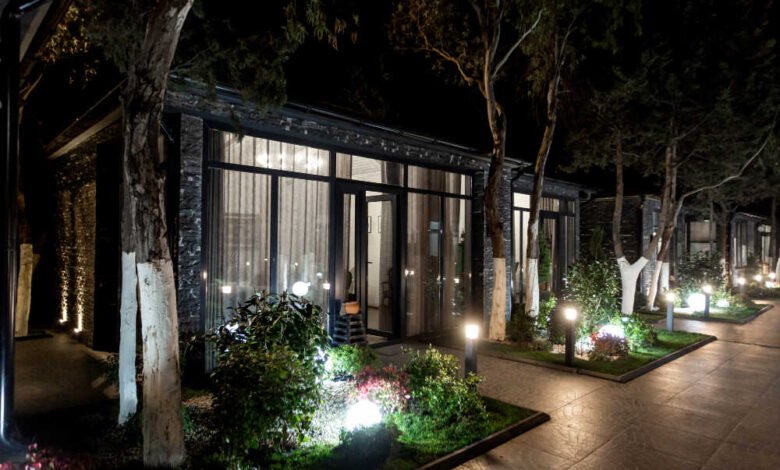A Brief and Useful Discussion on Outdoor Lighting Installation

When it comes to illuminating an outdoor space in your property the first thing that you should decide is the type of lighting you want. A large number of options in outdoor lighting fixtures is readily available any time and your options include the following –
- Spotlights
- Wall lights
- String lights
- Deck lights
- Post lights
- Pendant lights
- Floodlights
- Security lights
- Pathway lights and
- Garden lights
In the next step, you must decide where the lights will be installed. For example, you may want the external lights on the exterior of your home or commercial premises; you may want to light up a garden, a walkway, or any other outdoor space. It is important to note that the weather conditions in your area are also a deciding factor in the placement of your outdoor lights.
In the next step, you should consider whether to use halogen, solar-powered lights, or LED. Compared to both solar-powered lights and halogens, LEDs are not only more energy efficient and save you money on utility bills every month but also have a much longer lifespan. On the downside, the range of lights can be costlier than the other options up front. Halogen lights are more reasonably priced compared to LEDs but are also much less energy efficient. Solar-powered lights – on the other hand – are most energy efficient but these do not provide as much light as the other alternatives.
Different types of outdoor lighting
In this section of the blog post let us discuss different types of lighting options that are available for outdoors.
- Wall lights – This is a popular option when it comes to outdoor lights and the best thing about wall lights is these are pretty easy to install. Moreover, you can use it to highlight a particular zone or area in your premises says a professional who has dealt with external lighting installations in north London over the years. Typically these are mounted on the exterior of buildings but you can also place them to illuminate gardens and walkways.
- Pendant lights – This is yet another popular option in the category of light fixtures for outdoors. Pendant lights are mostly used to illuminate walkways and entryways although you can also use this option to highlight almost any other feature of your outdoor space, suggests the expert. Usually, people have these lights hung from overhead structures like a porch.
- Floodlights and security lights – When you want to illuminate a large area floodlights and security lights are your best option. This type of lighting option is ideal to bolster safety and security of an outdoor space. As far as security lights are concerned these are mostly mounted on a wall whereas floodlights are either mounted on a wall or the ground. This type of outdoor lighting option is common in parking lots and commercial buildings.
- Decorative landscape lighting – The purpose of this type of outdoor lighting is to highlight specific features in your outdoor space or garden like shrubs, trees, water bodies, flower beds and others. Mostly this range of lighting comes as solar-powered or low-voltage products.
When you are choosing lighting to deck up a landscape you must consider the wattage of the bulbs. This helps ensure the lighting that you choose does not overwhelm the area that you intend to capture the focus on. Here is a practical example to push the matter further – you will find most garden lighting to range from 2 to 3 watts whereas path lights typically come between 6 and 8 watts.
When outdoor lighting installation is concerned you should know that usually decorative lighting fixtures come with light covers over the bulb. This is done to prevent glare although it also facilitates more even dispersion of the light. These covers are available in a large range of colors, sizes, and shapes which in other words means it is highly likely to find the variety that complements your outdoor space.
- Feature light – This range of lighting fixtures is meant to highlight specific features within your premise – be it a residential place or a commercial utility. These features could be anything and everything usually ranging from a work of art, a landscaping feature to a piece of architecture. Compared to other varieties of outdoor lighting options this is usually more powerful.
- Path lights – The range of lighting fixtures is used to illuminate stairways, walkways, and other places that people would be walking along. A few examples of this category of fixtures include bollard lights, step lights, well lights, and others. One of the most common examples of path lights is a lamp post. However, a lamppost is usually powered by electricity and not solar power.
Installing outdoor lighting – how professionals do it
It is important to install outdoor lights in the proper way and for that you must hire trained and qualified electricians. Improperly or incorrectly installed outdoor lights are usually not very effective and along with that the safety aspect also comes into play. How do electricians properly install outdoor lights? This is an interesting question in itself admits a qualified electrician for outdoor lighting based in London.
First the professional will come and visit the site to assess its layout. Based on the assessment the professional determines the ideal locations for installation of the light fixtures. Once the plan becomes foolproof and final, they start running the wires and installing the fixtures. There are two popular methods of installing outdoor lighting, namely direct burial and surface mounted. Most probably your electrician will select any of the two approaches.
- Direct burial – First they place an electrical junction box beneath the ground and then run wiring to the junction box from the lighting fixture. In the next step, the junction box gets connected to the power supply. The direct burial method is ideal for low-voltage lighting like certain types of LED lighting, solar lights, and others.
- Surface mounted – A licensed electrician who deals with outdoor light installation in London explains the fixture is mounted on a pole or the surface of the premise. Then wires are run to the electric box from the fixtures and the electric box remains connected to the power supply. This approach is equally suitable for both high-voltage and low-voltage lighting.
We welcome the readers to write for us




